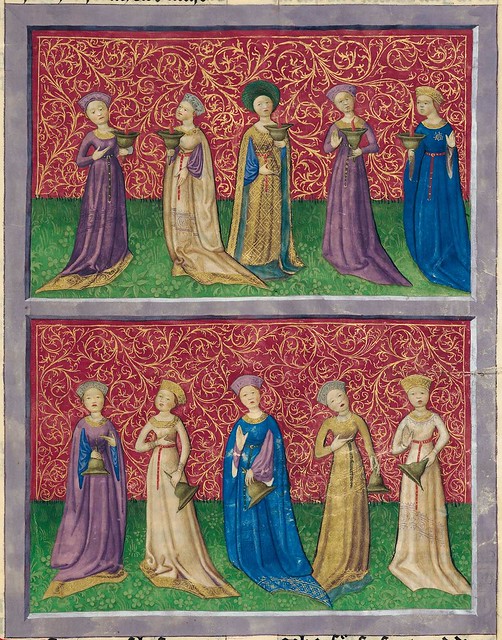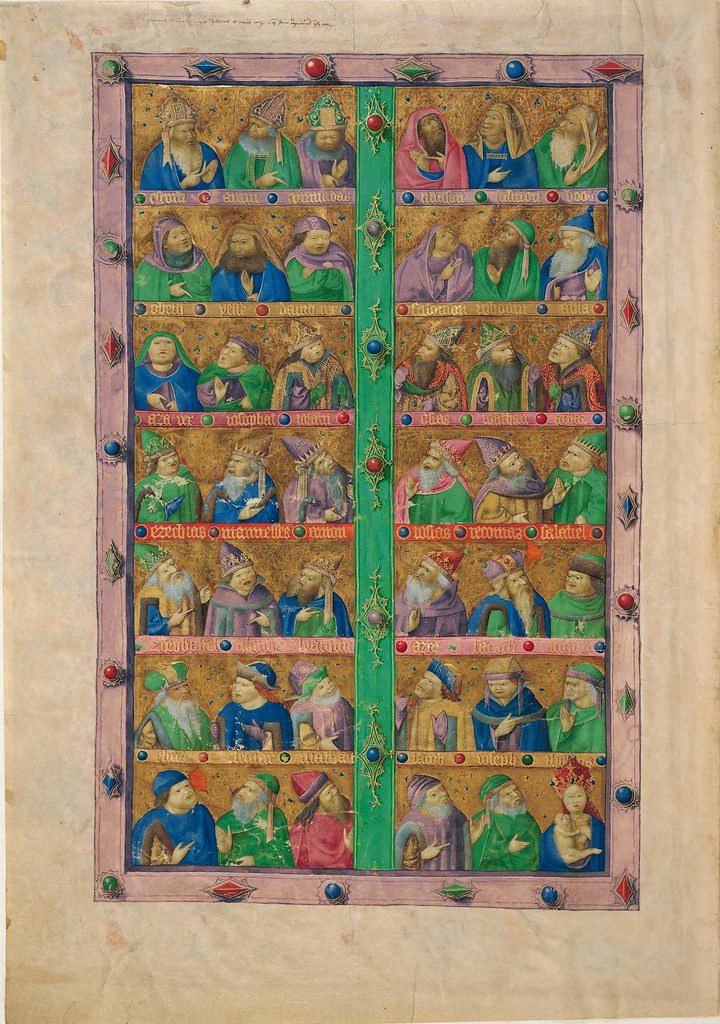Ottheinrich Bible
(15th-16th century : Bavaria)
(15th-16th century : Bavaria)




















You will be doing yourself a favour if you click through to the enlarged versions.
Regarded as one of the finest of all illuminated manuscripts in existence, the Ottheinrich Bible was thought to have been commissioned in about 1425 by the Royal Court of Bavaria. The unusually large manuscript was not completed until the following century when the German painter and engraver, Mathis Gerung, was offered 60 Rhenish guilders and winter clothes to decorate the text (the employment contract survives to this day).
The Bible carries the name of the benefactor who supported its completion. Ottheinrich (1502-1559) was the Prince of Neuburg, Elector Palatine, soldier, pilgrim, reformer, art patron (and adopted patron of BibliOdyssey), and the first unambiguously documented owner of the Bible.
The enormous book in the German vernacular language (and that only covers the New Testament) was eventually divided in the 19th century and bound into eight manuscripts which had a partially separated journey over the next century and a half. It was only about two years ago that all volumes were reunited when the privately owned sections were purchased by the Bavarian State Library in Munich (noted).
"Dr Christopher de Hamel, Consultant to the Western Manuscripts department at Sotheby’s [pdf], comments: “In the census of the hundred greatest illuminated manuscripts, European or Oriental, the present example is the only one ever likely to appear on the market. Conceived as the first illuminated bible and on an Imperial scale, it is one of the most profusely illustrated medieval bibles in existence. It is probably the last remaining manuscript in private hands from the incomparable Palatine Library, one of the greatest art collections ever formed. The manuscript has not changed hands except by descent since 1632, and in addition, it is one of the best documented manuscripts in the world, which gives it an academic importance beyond equal."
[In relation to the five volumes sold at auction [pdf] in 2007]:
"written by a single scribe in dark brown ink in a very fine large gothic liturgical hand, opening words of books in larger script, headings in red, capitals touched in red, small capitals and paragraph-marks in red, TWO HUNDRED LARGE ILLUMINATED INITIALS, mostly 5 lines high in a variety of renaissance designs on coloured panels with delicate tracery in liquid gold, EIGHTY-SIX LARGE MINIATURES up to full-page in size, eighty-three of them the width of two columns and mostly about quarter- to half-page in size, three of the miniatures column-width, all finely executed in full colours and liquid gold, a few original flaws in the vellum, some occasional rubbing and abrasion of miniatures.."
All the images above -- in random order -- are cropped from the full manuscript page and some more images (including full page examples) are available in the flickr set. The set of miniatures available from wikimedia appears to be either older scans or come from the 2002 facsimile publication.
- The magnificent Ottheinrich Bible (Cgm 8010) is available in eight sections (flash or html) at the website of the Bavarian State Library of Munich. [English landing page]
- Faksimile Verlag 2002 reproduction site.
- Previously: illuminated / religion.




No comments:
Post a Comment